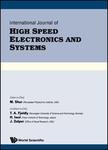版权所有:内蒙古大学图书馆 技术提供:维普资讯• 智图
内蒙古自治区呼和浩特市赛罕区大学西街235号 邮编: 010021

作者机构:Solid State Electronics Laboratory Department of Electrical Engineering University of Michigan Ann Arbor MI 48109-2122 United States Center for High Technology Materials Department of Electrical Engineering University of New Mexico Albuquerque NM 87106 United States Sensors/Electron Devices Directorate US Army Research Laboratory Adelphi MD 20783 United States
出 版 物:《International Journal of High Speed Electronics and Systems》 (Int. J. High Speed Electron. Syst.)
年 卷 期:2002年第12卷第4期
页 面:969-994页
核心收录:
学科分类:0810[工学-信息与通信工程] 0808[工学-电气工程] 070207[理学-光学] 0809[工学-电子科学与技术(可授工学、理学学位)] 08[工学] 070203[理学-原子与分子物理] 0804[工学-仪器科学与技术] 0805[工学-材料科学与工程(可授工学、理学学位)] 0803[工学-光学工程] 0702[理学-物理学]
基 金:This work is being supported by the Army Research Office under Grants DAAD19-01-1-0462 and DAAD19-00-1-0394 (DARPA program) as well as the National Science Foundation under Grant ECS 9820129
主 题:Semiconductor quantum dots
摘 要:InAs/GaAs quantum dot devices have the potential to be the leading technology for infrared detection and emission, which are necessary for many military and domestic applications. Quantum dot infrared photodetectors yield higher operating temperatures, lower dark currents, and more wavelength tunability. They also permit the detection of normal-incidence light. Quantum dot infrared sources are also expected to yield higher operating temperatures, in addition to lower threshold currents and higher modulation bandwidths. After a brief review of the history of infrared detection and emission, the optical and electrical characteristics of self-organized In(Ga)As/GaAs quantum dots grown by molecular beam epitaxy are discussed, followed by results for the quantum dot detectors and emitters that have been developed at the University of Michigan, Ann Arbor.